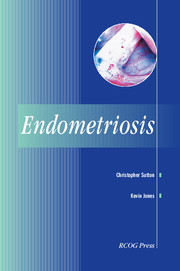Conclusion
Published online by Cambridge University Press: 05 February 2014
Summary
The last decade of the 20th century witnessed a revolution in technological progress and surgical skill in the field of minimal-access operative laparoscopy in gynaecology. Most of this effort has been directed towards conservative surgery to improve fertility, but recently, there has been a discernible trend to perform curative radical surgery by laparoscopy. Laparoscopic surgery can be employed for minimal peritoneal endometriosis as well as the most severe stages of the disease. Dense, fibrotic, infiltrative disease of the rectovaginal septum or pelvic sidewall, with retroperitoneal dissection of the ureter can be performed. Laparoscopic surgery is even used to perform segmental resection of the colon involved with endometriosis. Such procedures take a large amount of operating time, and require a skilled and dedicated team to ensure a successful outcome, but the benefits for the patients are enormous. The advantage lies not only in the reduction of postoperative discomfort and the rapid return to normal life, but also because the endoscopic approach is associated with less morbidity, infection, and adhesion formation, which often thwarts the best intentions of the traditional laparotomists.
During the first decade of this century, minimal access endoscopic surgery is likely to continue to expand and develop. It will become the primary treatment for endometriosis until such a time, that science elucidates the cause of the condition, allowing a more logical approach aimed at the prevention of this strange and difficult disease.
- Type
- Chapter
- Information
- Endometriosis , pp. 61 - 62Publisher: Cambridge University PressPrint publication year: 2004

